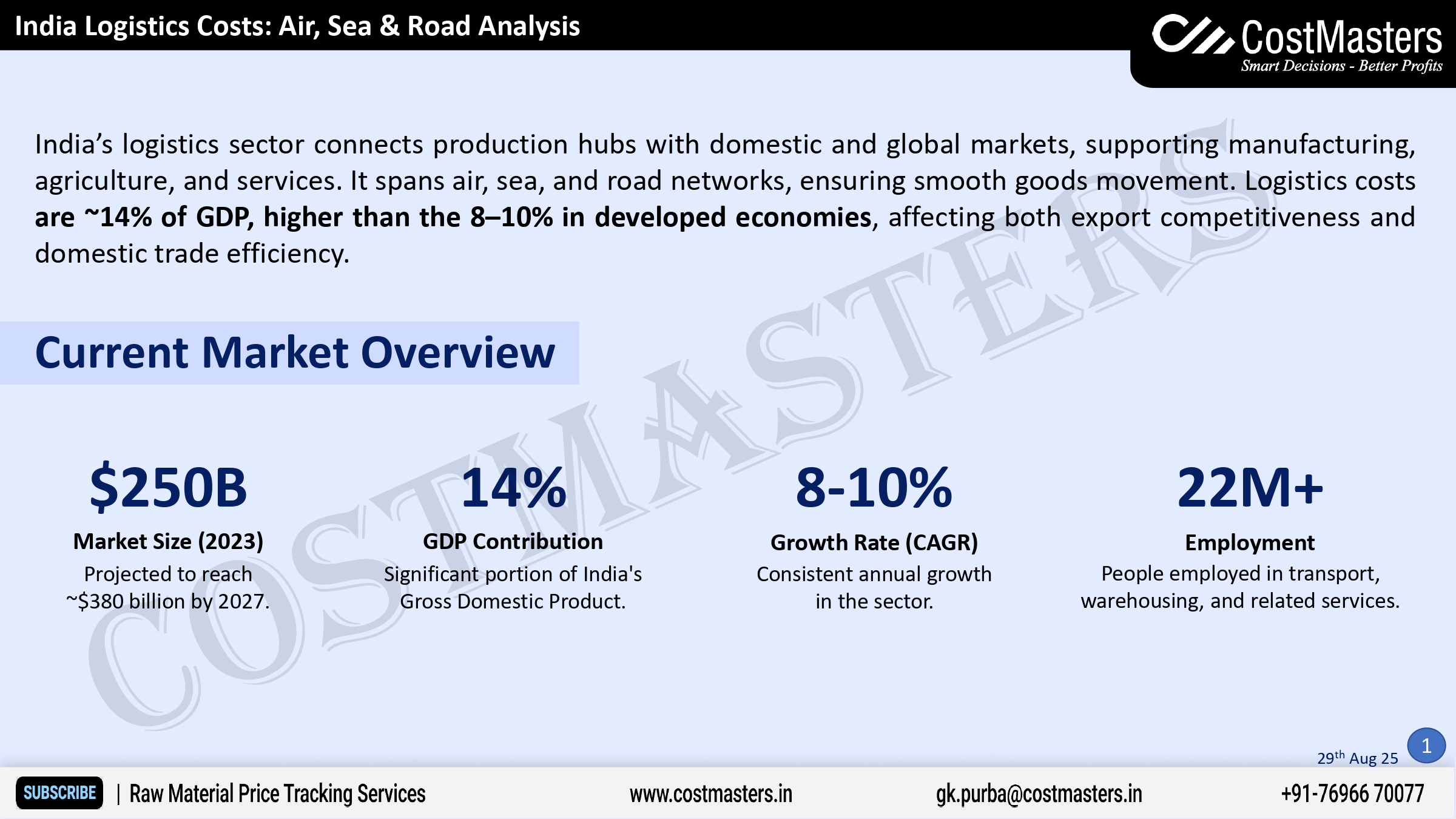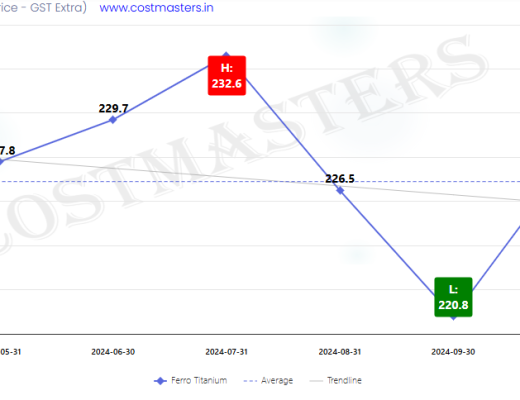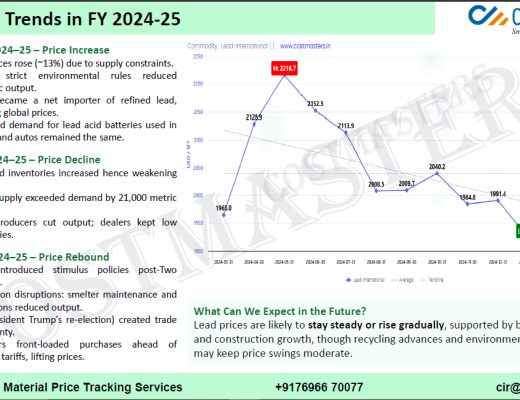India’s logistics sector is the backbone of trade, connecting factories, farms, and service hubs to both domestic and global markets. From delivering raw materials to enabling e-commerce, logistics plays a critical role in keeping the economy moving.
But here’s the catch: logistics costs in India stand at ~14% of GDP, much higher than developed economies where it’s around 8–10%. This directly impacts export competitiveness and domestic trade efficiency.
So, let’s break down the numbers and see how air, sea, and road logistics stack up in terms of costs, advantages, and challenges.
📊 India’s Logistics Market Snapshot (2023)
- Market Size: $250 billion (set to hit $380 billion by 2027)
- Growth Rate (CAGR): 8–10%
- GDP Contribution: 14%
- Employment: 22M+ people
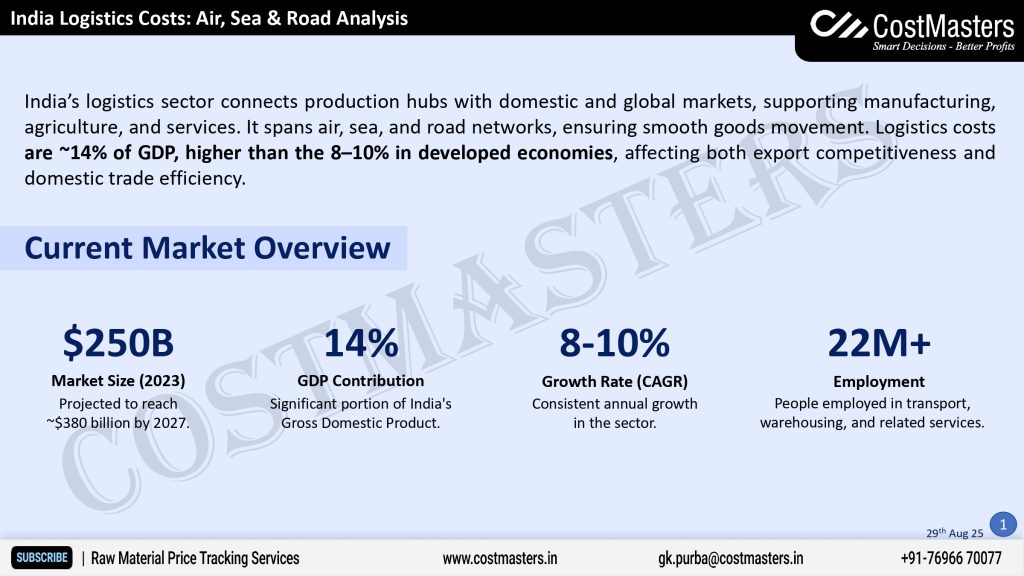
🚚 Road Transport: Flexible but Fuel-Heavy
- Freight rates: ₹2–4 per ton-km (full truck load)
- Major cost driver: Fuel (55% of expenses), heavily influenced by global crude oil prices and taxes.
- Pros: Flexible, door-to-door delivery.
- Cons: Congestion, road quality variations, fuel volatility.
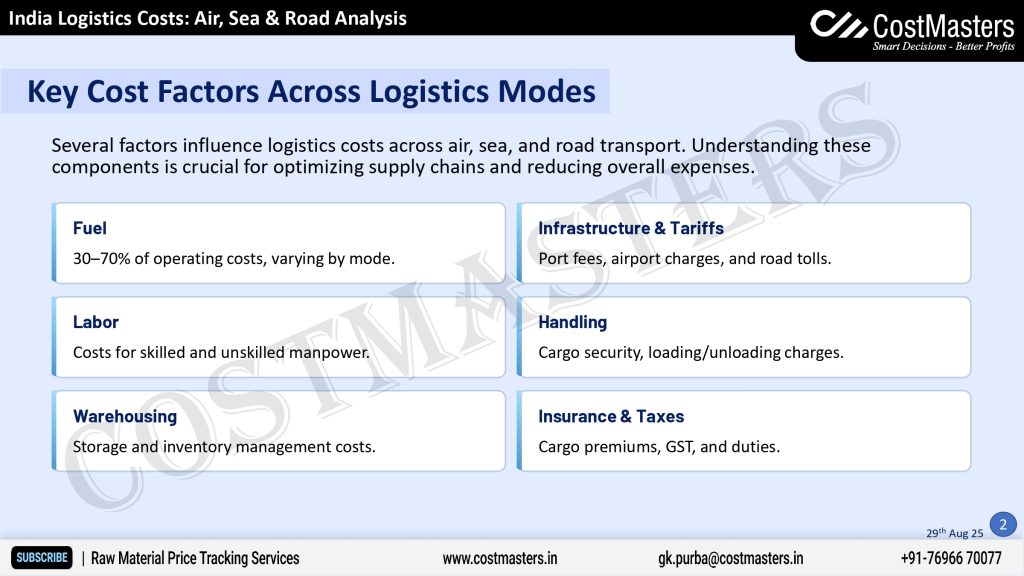
✈️ Air Freight: Speed at a Premium
- Freight rates: ₹25–35 per ton-km (domestic)
- Major cost driver: Aviation Turbine Fuel (30–40% of costs).
- Pros: Fastest, reliable, and secure.
- Cons: Expensive, limited cargo capacity, weather dependencies.
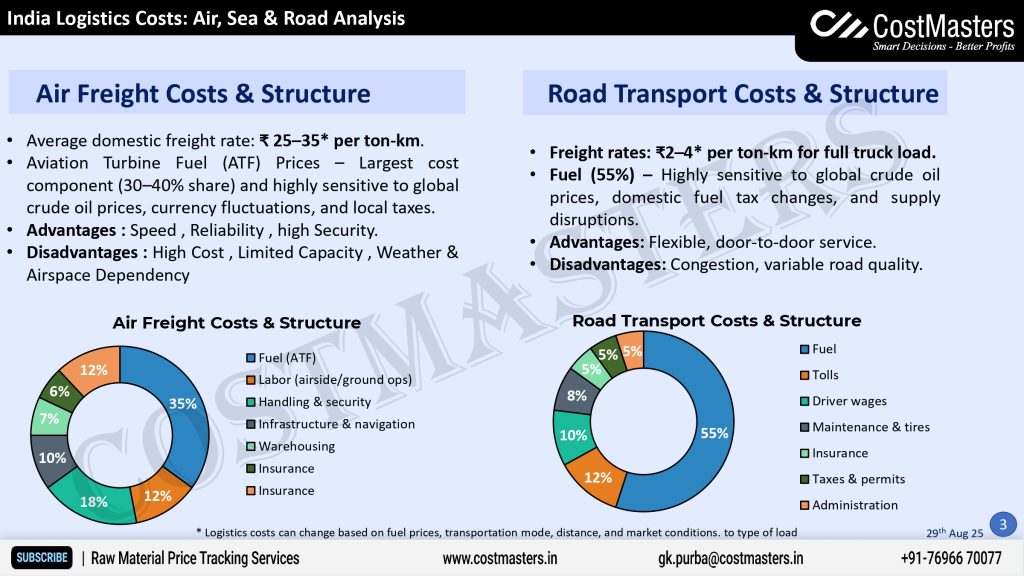
🚢 Sea Freight: Economical but Slow
- Port handling charges: ₹5,000–8,000 per container.
- Major cost driver: Bunker fuel (~46% of costs, fluctuates weekly with global oil prices).
- Pros: Cheapest per ton-km, best for large volumes.
- Cons: Long transit times, port congestion, weather risks.

💡 Comparative Snapshot
| Mode | Cost (INR) | Transit Time | Key Use Case |
|---|---|---|---|
| Road | ₹33,400 – ₹50,100 | 3–4 days | Flexible bulk transport |
| Air | ₹168,750 – ₹337,500 | <1 day | Urgent, high-value cargo |
| Sea | ₹15,000 – ₹30,000 | 32–50+ days | Large, low-urgency shipments |

🏗️ Government Interventions to Cut Costs
India is working aggressively to bring down logistics costs from 14% to 8–9% of GDP by 2030:
- PM Gati Shakti: GIS-based planning for multimodal connectivity.
- Bharatmala: Economic corridors and expressways to reduce travel time by up to 40%.
- Sagarmala: Port modernization and hinterland connectivity.
- Dedicated Freight Corridors (DFC): Faster, cheaper bulk cargo transport by rail.
- Digitalization: E-way bills, FASTag, GPS, and IoT for better efficiency.
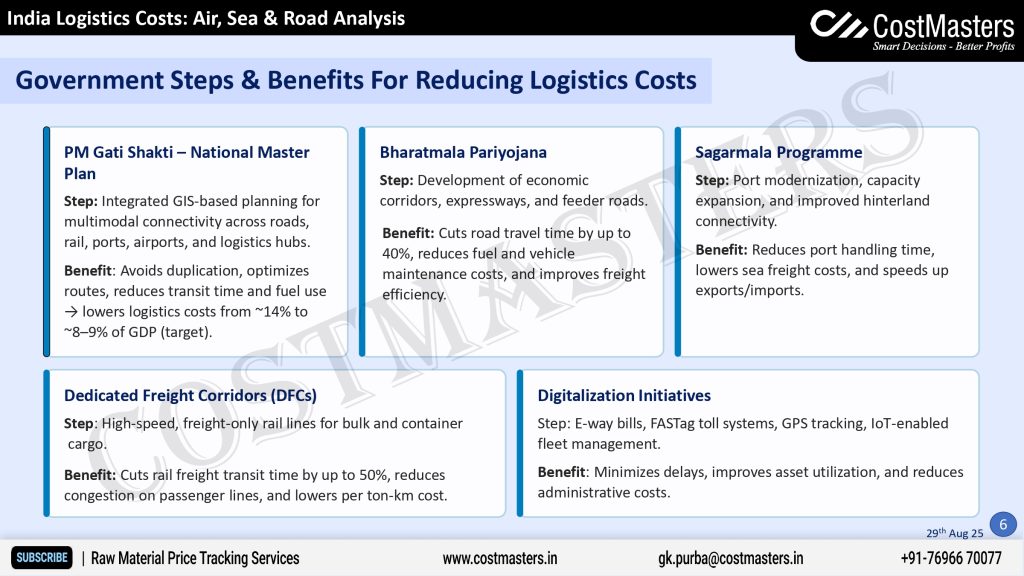
🔮 The Road Ahead: Future Outlook
- Air: AI-driven load optimization and regional cargo hubs will speed up e-commerce deliveries.
- Sea: LNG-powered vessels and modern ports will cut fuel costs and turnaround time.
- Road: Electric and LNG trucks will reduce diesel dependency.
- Integration: Multi-Modal Logistics Parks (MMLPs) will improve efficiency and reduce first/last-mile costs.

End Goal: By 2030, India aims to reduce logistics costs to 8–10% of GDP, boosting its global competitiveness and improving its Logistics Performance Index (LPI) ranking into the top 25.
✅ Takeaway: While air transport wins on speed, road transport balances cost and flexibility, and sea remains the king of low-cost bulk movement. With government reforms and tech adoption, India’s logistics industry is on the path to becoming faster, cheaper, and more efficient.
